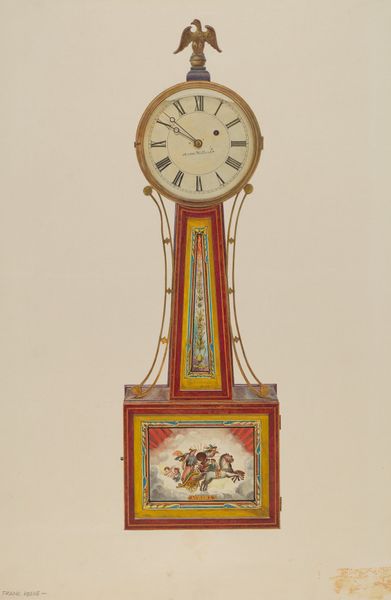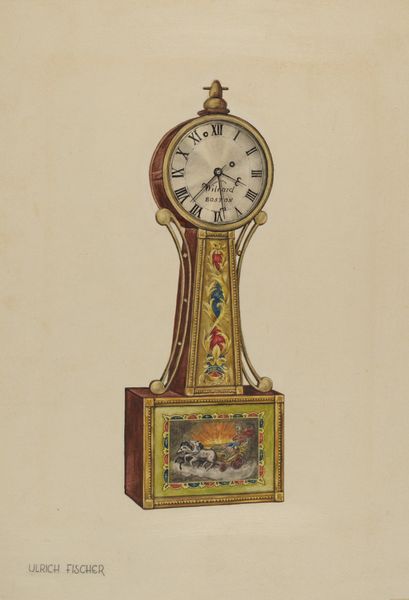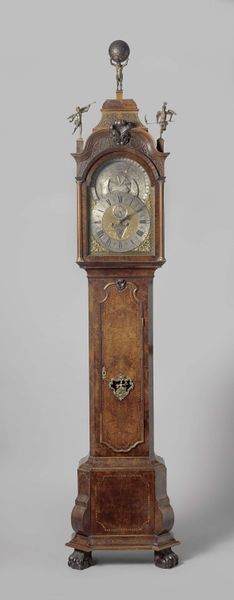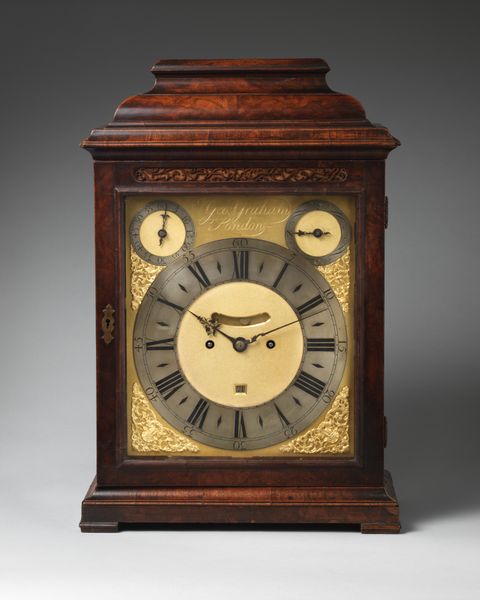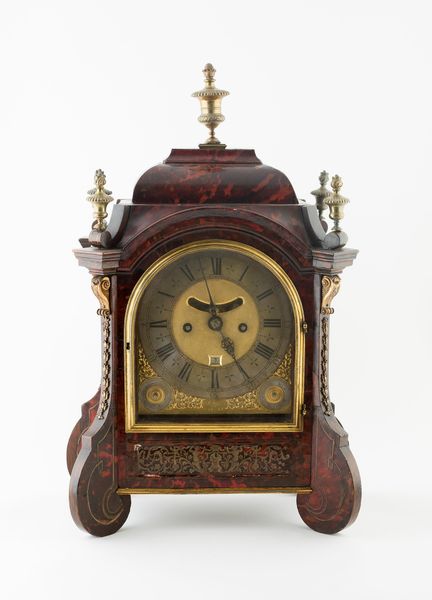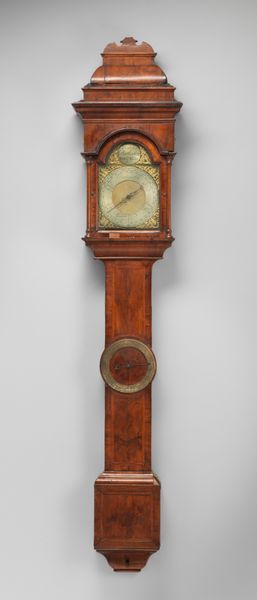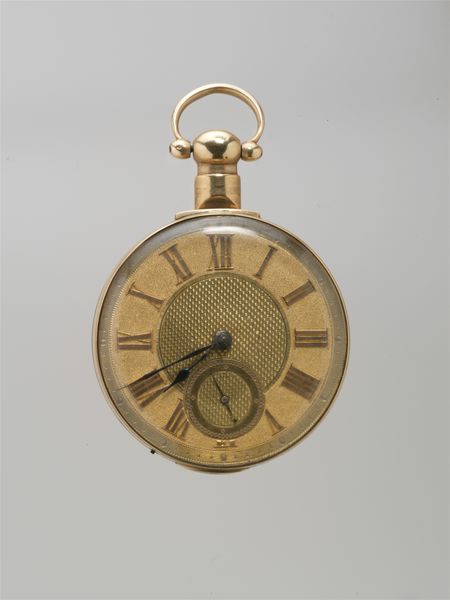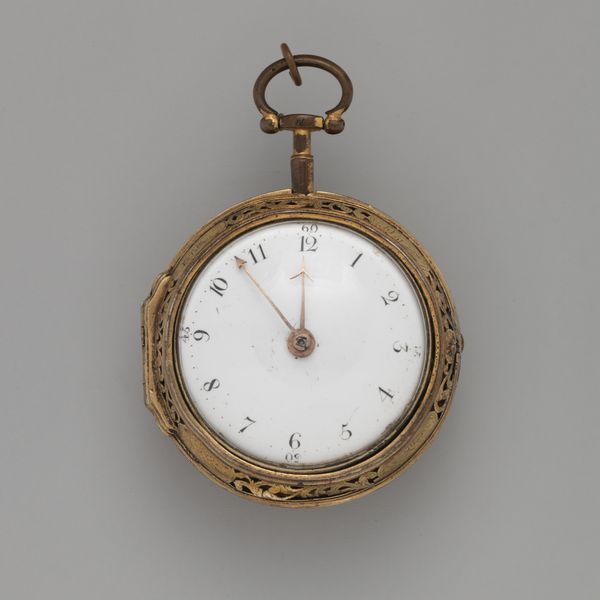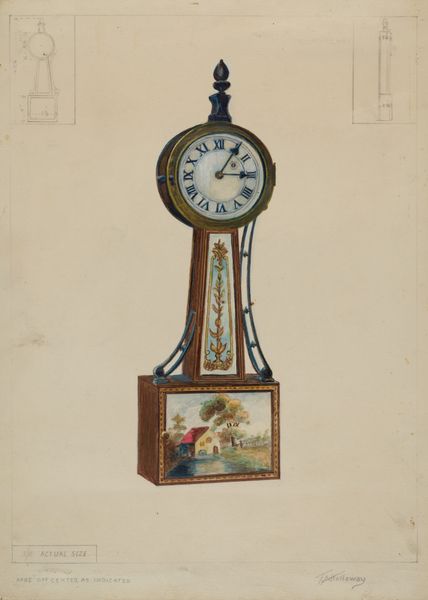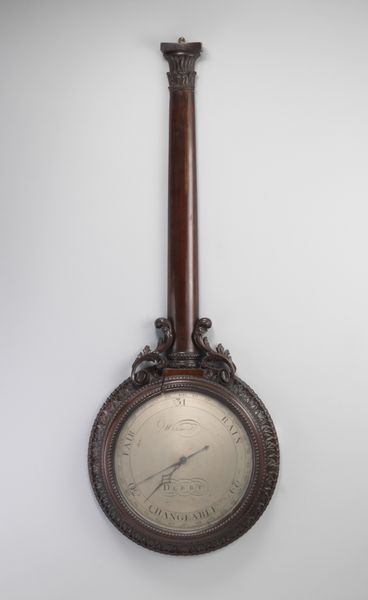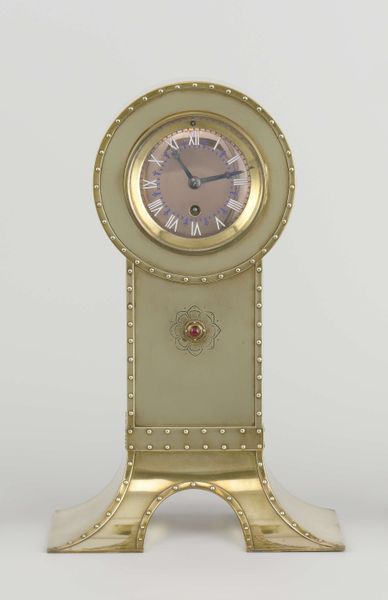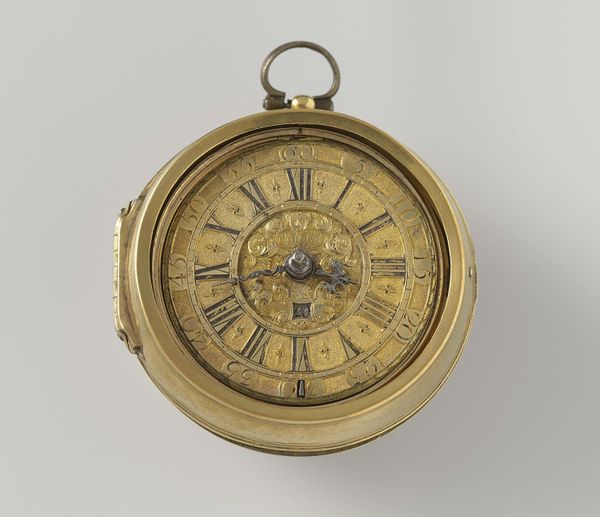
painting, oil-paint
#
neoclacissism
#
painting
#
oil-paint
#
landscape
#
house
#
traditional architecture
#
geometric
#
classicism
#
united-states
#
cityscape
#
decorative-art
#
miniature
Dimensions: 40 1/2 x 10 in. (102.9 x 25.4 cm)
Copyright: Public Domain
Curator: What strikes me immediately is the balance in the arrangement; how the various elements—circular dial, long neck, framed landscape—contribute to the object's visual harmony. Editor: I find it curious. This "Banjo clock", likely crafted between 1813 and 1816 by Curtis and Dunning, departs quite significantly from other time-keeping devices that existed around the time. I'm fascinated by the rise of Federal style in America and its expression of emerging nationalism. Curator: Observe the painted landscape in the base—its miniaturist details draw you in, yet the subject itself, with its simple house and pastoral setting, projects an uncomplicated vision of American life. Note too the geometric form, neoclassical in design, an attempt to capture a visual experience from two historical periods, reflecting, and producing class values through visual aesthetics. Editor: I would add that the painting's value emerges from its artisanal creation; each element from the carpentry of the frame to the painted decorations shows individualized labor contributing to its economic significance in a period of growing industrialization. How was it made, where were the materials sourced? Did this influence production processes outside traditional clock making practices? Curator: The color palette contributes to the clock's character too—the golds and greens lending the piece a certain gravitas. I want to linger over the use of classical motifs blended into the artwork's overall composition. It's fascinating how these artistic strategies invite us to contemplate a world of refined sensibility. Editor: True, but its form, dictated by practical necessity to measure the passage of time, reveals much about societal shifts from agricultural toward industrial work, reflected through shifts from personalized manufacture to efficient standardization. Curator: I agree the object occupies a unique niche at the intersection of art and functional design, though from a formal standpoint, the pendulum case, transformed into a decorative element through miniaturist painting and gilding, elevates its significance from mere functionality to an aesthetic experience. Editor: From an economic standpoint, by uniting artistic ornamentation with commodity goods, we witness efforts by emerging merchant class patrons asserting aesthetic values while also expressing new national aspirations, with each contributing equally to our understanding of American decorative arts tradition. Curator: Thank you, with this final observation, the viewing of the "Banjo clock" shifts into new perspectives, enriching our insights when visiting the Metropolitan Museum of Art, New York. Editor: It also pushes our understanding about production and its impacts across labor practices, commodification of nature through its image, and material use during early nineteenth century society.
Comments
No comments
Be the first to comment and join the conversation on the ultimate creative platform.
